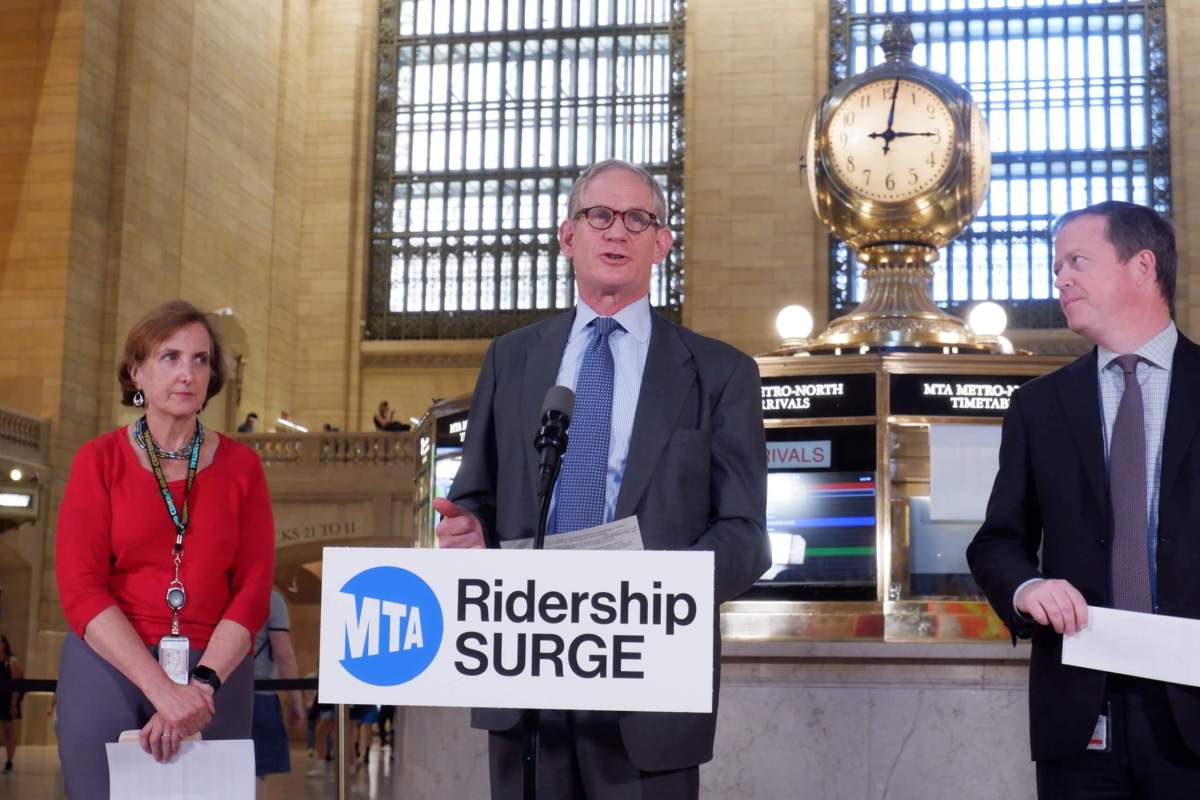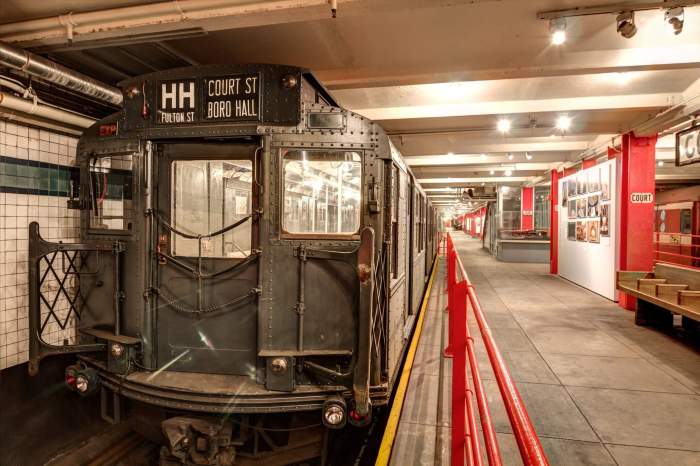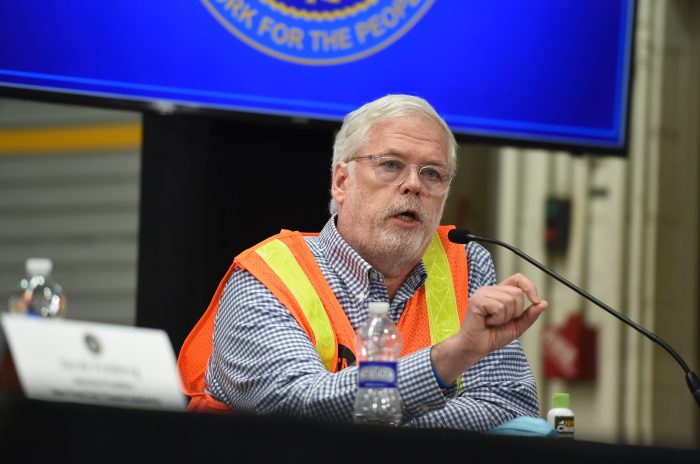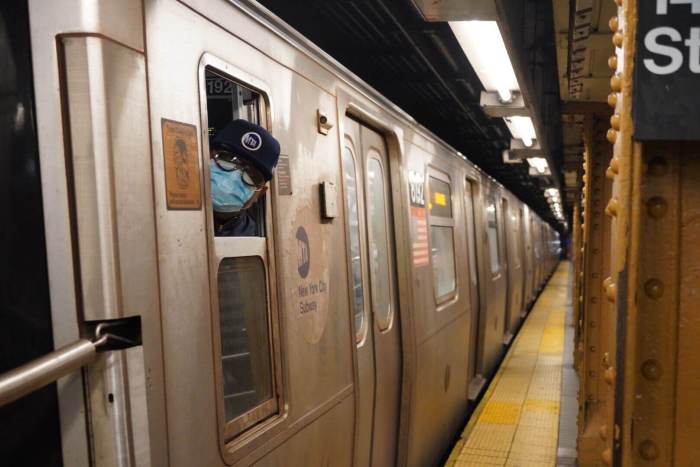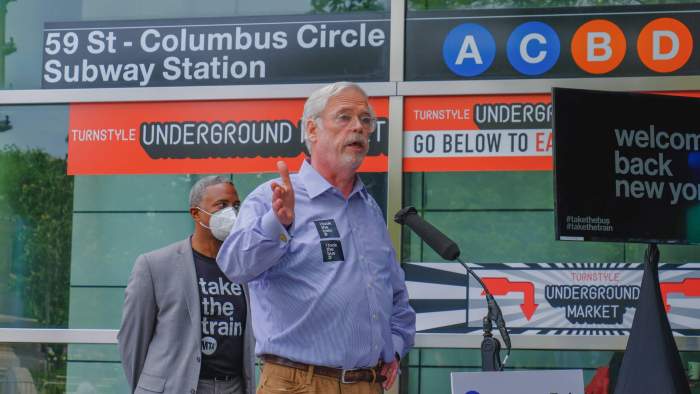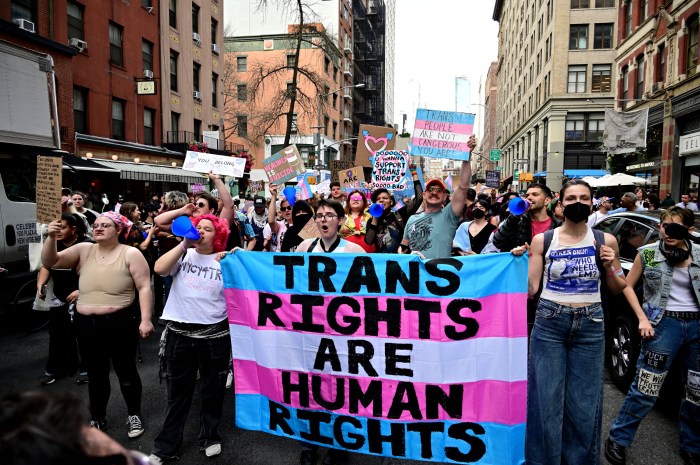New Yorkers took a record 3.7 million subway trips Wednesday, Sept. 14, the highest number since the COVID-19 pandemic outbreak began in March 2020, transit officials announced Thursday.
The rate of ridership was up 30% compared to last year, but remained 37% down from 2019 numbers, according to counts by the Metropolitan Transportation Authority.
Buses logged around 1.5 million straphangers in recent days, coming close to high watermarks from last fall, while the agency’s two commuter railroads have repeatedly broken COVID-era records since Labor Day.
Transit honchos celebrated what they termed a “ridership surge” at Grand Central Terminal Sept. 15.
“Things are on the move,” said MTA Chairperson and CEO Janno Lieber. “Ridership is coming back, in fact, ridership is surging, and that’s an indication that New York is coming back strong.”
The Long Island Rail Road counted 202,700 riders Wednesday, second only during the pandemic to 204,000 a week earlier, while Metro-North broke back-to-back records at 181,600 trips Wednesday and 180,200 Tuesday.
The MTA’s paratransit service Access-A-Ride also had its highest number of trips Wednesday at 28,000, 86% of pre-COVID numbers.
The increase in ridership followed the return of students and office workers after Labor Day. Last week, Governor Kathy Hochul also lifted the state’s transit mask mandate.
Half a billion rides have been paid for through the MTA’s tap payment system OMNY since it launched in mid-2019.
Some 1.2 million users have switched to TrainTime, the MTA’s new consolidated scheduling and ticketing smartphone app for LIRR and Metro-North, since it launched on Aug. 17, with about 208,000 daily users.
Government officials and business leaders are hoping for a larger return to in-person work after Labor Day, after MTA’s public transit use had stagnated at around 40% below 2019 numbers.
A Thursday report by the non-profit business boosters Partnership for New York City found 49% of Manhattan office workers were in the office on an average weekday so far in September, but only 9% of them came in five days a week. The largest share, 37%, work in the office three days a week, the survey found.
Lieber last month said that remote work was the main driver in keeping MTA ridership below full pre-pandemic numbers that used around 5.5 million straphangers a day on the subways and north of 2 million on the buses.
“There’s no question that we’re that some version of work from home is here to stay,” Lieber said Thursday. “But the numbers that we’re seeing, the surge in ridership that we’re seeing, says that back to the office is a meaningful trend.”
He added that MTA is going to “work our butt off” to bring riders back, and Richard Davey, President of New York City Transit in charge of the subways, buses, and Staten Island Railway, noted that August had some of the best service delivery rates in a long time at around 93% on the subways and 95% on buses.
“That’s pretty darn good,” said Davey. “We have the folks to be able to run this service, and August was one of our best service delivery months that we’ve had in a long time, again, across the system.”
The MTA still faces a severe deficit in funding for its operations, which relies heavily on fares that were decimated during COVID.
MTA budget officials in July forecast a looming ‘fiscal cliff’ in the form of a $2.5 billion deficit every year once federal pandemic relief funding runs out after 2024, and transit leaders have been pushing for the state to fund the agency more like a public good to fill up the hole without cutting service, hiking fares, or job losses.



